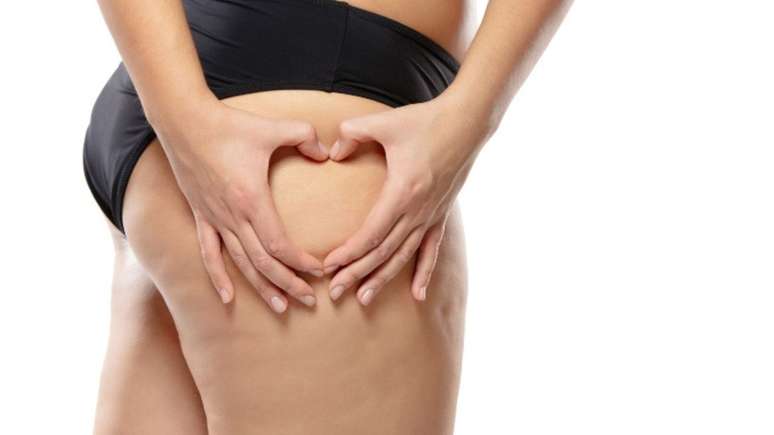We consulted experts to unravel the biggest myths and truths surrounding cellulite; watch
Gynoid lipodystrophy, popularly known as cellulite, is a famous and recurring problem among women.
“Cellulite is an inflammation of the adipose tissue, in which the fat cells undergo a process of alteration, showing excess fat inside and deformities of its wall. These irregularities end up projecting to the surface, leading to the formation of a series of wrinkles in the skin. Furthermore, the decrease in collagen fibers aggravates the problem. The adipose tissue is flaccid and needs fibrous septae (collagen) to be supported. When this collagen is not sufficient, cellulite appears”, explains the dermatologist Dr. Paola Pomerantzeff.
The problem is much more common in women due to the hormone estrogen, which is directly involved in this inflammatory process, but bad habits are also involved, so experts usually say that the cause is multifactorial. Below, we consulted with three doctors to highlight the myths and truths about how cellulite looks and gets worse:
1. Cellulite is a genetic condition. REAL. The genetic factor is the main cause of cellulite, according to Dr. Paola. This explains the higher number of cases in women.
“A recent study showed that, anatomically, there are differences that account for the higher incidence in women. The skin is composed of two layers of fat (superficial and deep), separated by the superficial fascia. In men, there is a greater number of lobules of subcutaneous fat and a greater number of fibrous bands, more fibrous connections between the superficial fascia and the dermis than in females, therefore a greater force is required to break the fibrous connections and this is precisely why they suffer less from scar formation .cellulite”, explains the Dr. Claudia Merlocosmetology specialist at the BWS Institute.
2. Thin people don’t get cellulite. MYTH. “When we see a thin woman, we are not doing a body composition assessment, therefore, she may have a high percentage of fat and resulting in cellulite. We do not know the lifestyle habits of this thin woman and, furthermore, the consumption of inflammatory foods that ingests”, explains Dr. Claudia Merlo.
The problem also increases with age, due to the loss of collagen and all the fibrous band structures that make up the skin.
3. Creams treat cellulite. MYTH. Current affairs resources (ironing) have very limited performance. We must bear in mind that cellulite is predominantly a subcutaneous (fat) alteration. There are no proven effective creams that act on adipose tissue.
“Cosmetic creams for cellulite are not able to treat it, as they cannot reach the deep layers, where the fat, lymphatic system and fibrous bundles are located, which are structures related to the cause of cellulite”, emphasizes Dr. Claudia Merlo.
4. Smoking does not affect. MYTH. “The toxic substances of cigarettes affect various functions of the body, worsening oxygenation and microcirculation of the skin, which decreases the production of collagen and favors the accumulation of localized fat”says Dr. Paola.
5. Soda causes and worsens cellulite. REAL. Soft drinks contain a high concentration of sugar and sodium.
“Sugar increases localized fat and sodium increases water retention, worsening local circulation. Not only sodas, but all foods high in sugar and fat can aggravate cellulite, as they increase fat cells”, explains Dr. Paola.
According to the doctor. Cláudia Merlo, other of the main “bad habits” linked to the development and worsening of cellulite are: inflammatory diet (with consumption of foods with a high glycemic index), sedentary lifestyle, obesity and poor water intake.
6. Tight clothes make cellulite appear. IN TERMS. Dermatologist dr. Paola explains that wearing tight-fitting clothes does not cause cellulite, but it can aggravate existing cellulite, as it worsens lymphatic and blood circulation.
“This causes water retention and worsens local microcirculation. If you’re trying to get rid of cellulite, opt for more comfortable clothes”, says the doctor. “Compression stockings, on the other hand, can help as long as they are guided by vascular specialists (vascular surgeon or vascular physiotherapist), as there are numerous compression characteristics of stockings, so usage is individualized,” complete Dr. Claudia Merlo.
7. The result of the anti-cellulite treatment is definitive. MYTH. Dr. Cláudia Merlo points out that, in terms of results, an improvement in skin texture and a reduction in skin relief are expected. “This result is not definitive, because cellulite has multifactorial causes, so new ones can appear in the course of life”says the doctor.
anti-cellulite treatments
According to Dr. Cláudia Melo, in the office, there are options such as fat reduction injections, which are applied in the regions with greater resistance to elimination with diet and physical exercises, subcision of fibrous bands, radiofrequency and injectable collagen biostimulators.
“The procedures can be associated, according to the medical evaluation of the patient’s need. The fat cell reduction injections promote the destruction of the fat cell membrane and consequently less local edema after the final result. The radiofrequency heats the tissues up to 42º degrees and stimulates collagen The injectable collagen biostimulator is applied to stimulate the collagen-forming cells (fibroblasts) to produce collagen”, explains.
Of these treatments, only the fat-reducing injections have downtime: “There is an inflammatory process (pain, heat, redness and swelling) that lasts about 20 days,” says the doctor. In subcision, the recovery time is longer (30 days), since a scalpel needle is inserted under the skin, with continuous movements, to break the fibrous septae”, says the doctor. Another option is Emtone, which targets the top 5 causes of cellulite.
Source: Terra
Ben Stock is a lifestyle journalist and author at Gossipify. He writes about topics such as health, wellness, travel, food and home decor. He provides practical advice and inspiration to improve well-being, keeps readers up to date with latest lifestyle news and trends, known for his engaging writing style, in-depth analysis and unique perspectives.








